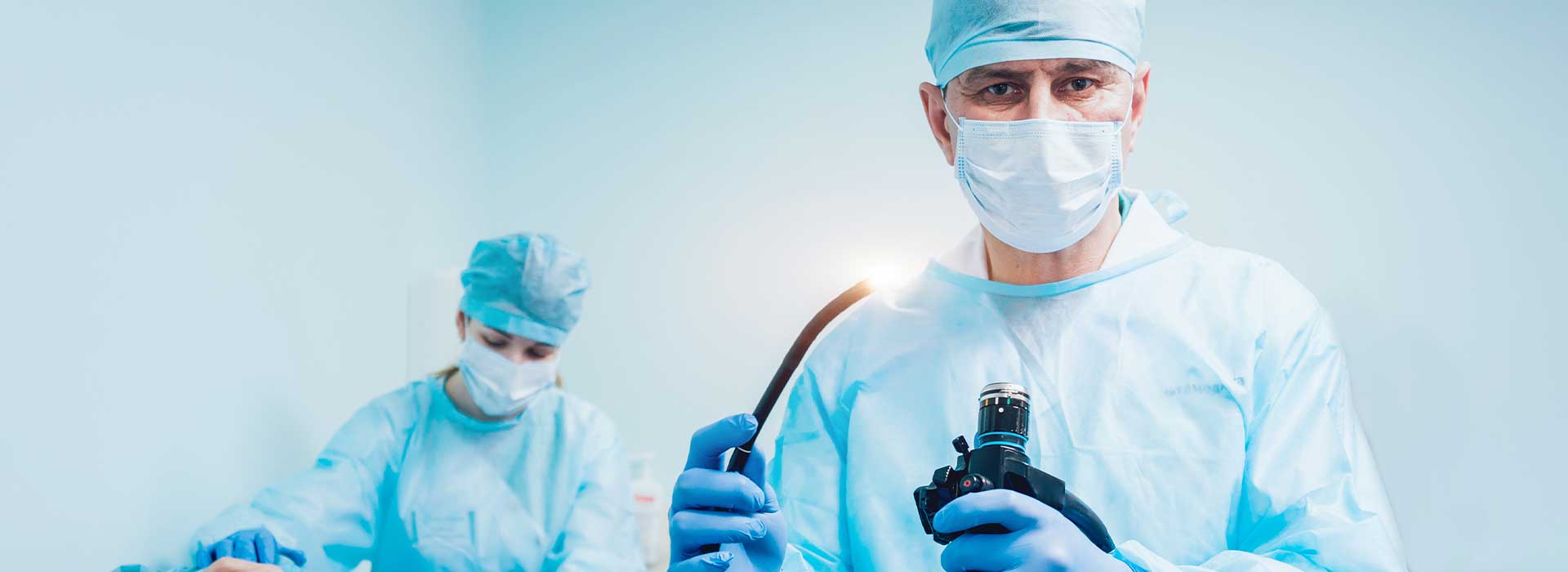Upper GI endoscopy: A time-tested, versatile diagnostic and therapeutic tool
Endoscopy services are multi-functional. At Triborough GI, our specialist team of seven board-certified gastroenterologists uses this time-tested technology to both detect conditions or the root cause of problems and to relieve and treat them!
An introduction to endoscopy
Endoscopy comes in many different forms. Two of the most common are available at our four New York City area offices in Brooklyn, Bronx and Staten Island: upper endoscopy and colonoscopy.
All endoscopic services generally involve the insertion of a narrow, flexible tube through a natural orifice. under anesthesia. The type of endoscopy depends on the organ or part of the body that is being checked or treated via this unique instrument. The endoscope is equipped with a light and camera. Together, these built-in capabilities allow our doctors to gather clear images and videos of the organs and tissues that are being examined. Additionally, scopes are equipped with the capacity to hold other tools, which may then be used to perform specific tasks, for instance, sampling or removing suspicious tissue for biopsy.
The upper endoscopy
The endoscope used for this service is introduced to examine the upper gastrointestinal tract. Notably, our gastroenterologists will want to assess the health and function of the esophagus or “food pipe” that links the mouth to the stomach. In turn, an upper GI endoscopy may be ordered to assess the cause of and diagnose the following symptoms and conditions:
- Chronic acid reflux
- Unexplained bleeding and anemia
- Frequent and persistent nausea or pain
- Unexplained weight loss
- Dysphagia or difficulty and pain with swallowing
- Ulcers
- Benign and cancerous masses
- Celiac disease
- Malabsorption
- Blockages
- Stricture/abnormal tightening of the esophagus
Our team will advise you on how to prepare before your procedure. It is essential to follow any instructions provided by us. The endoscopy process itself only takes around 20 minutes. It is a predictable and safe diagnostic and therapeutic intervention with a very low risk of serious side effects and complications.
After the endoscope has been used to “take a look inside” or otherwise applied to remove a tissue sample or treat conditions like strictures, it is withdrawn. Then, you will be monitored in recovery as any medicine administered to help you relax wears off.
Leading up to your procedure we will advise you on the necessary preparation steps and what to expect after your endoscopy. It is essential to follow our directions on what and when to eat and drink and when to return to driving and other “normal” activities.
While gas, cramping, and sore throat are not uncommon following an upper GI endoscopy, these side effects are typically mild and subside within 24 hours after your procedure.
Do not wait on concerning changes and problems that interfere with eating and other vital functions. We encourage you to reach out to the team at Triborough GI today to schedule an appointment at one of our four locations in metro NY. You can call (718) 795-2734 for Sheepshead Bay, Brooklyn, (718) 710-4906 for Staten Island, (718) 360-1632 for the Bronx, and (718) 865-3960 for Bushwick, Brooklyn. Alternatively, you can select the “Make An Appointment” button on this website at your convenience.


